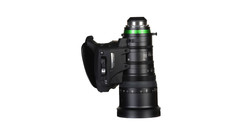I will make numerous comparisons of the 20-120 to the 19-90 in this test. I did the same type of comparison with other lenses in the same post, since they are generally used in tandem, so I took the same approach with these two lenses, despite being generally used as an either/or. I am not drawing these similarities and differences to pit these two lenses against each other, but since they exist in the same Cabrio family, I find it’s helpful to point out the variances. Let’s take a closer look at the Fujinon Cabrio 20-120.
Fujinon Cabrio 20-120mm
| Zoom Factor | MSRP Price | Weight | Lens Mount | T* | Focus Rotation | Iris Blades | Front Diameter | Minimum Focus |
| 6x | $18,200 or $11,499 w/o servo | 6.4 lbs w servo or 5.3 lbs w/o servo | PL | T3.5 | 200° | 9 | 114mm | 3.8′ + macro |
BUILD AND FUNCTIONALITY
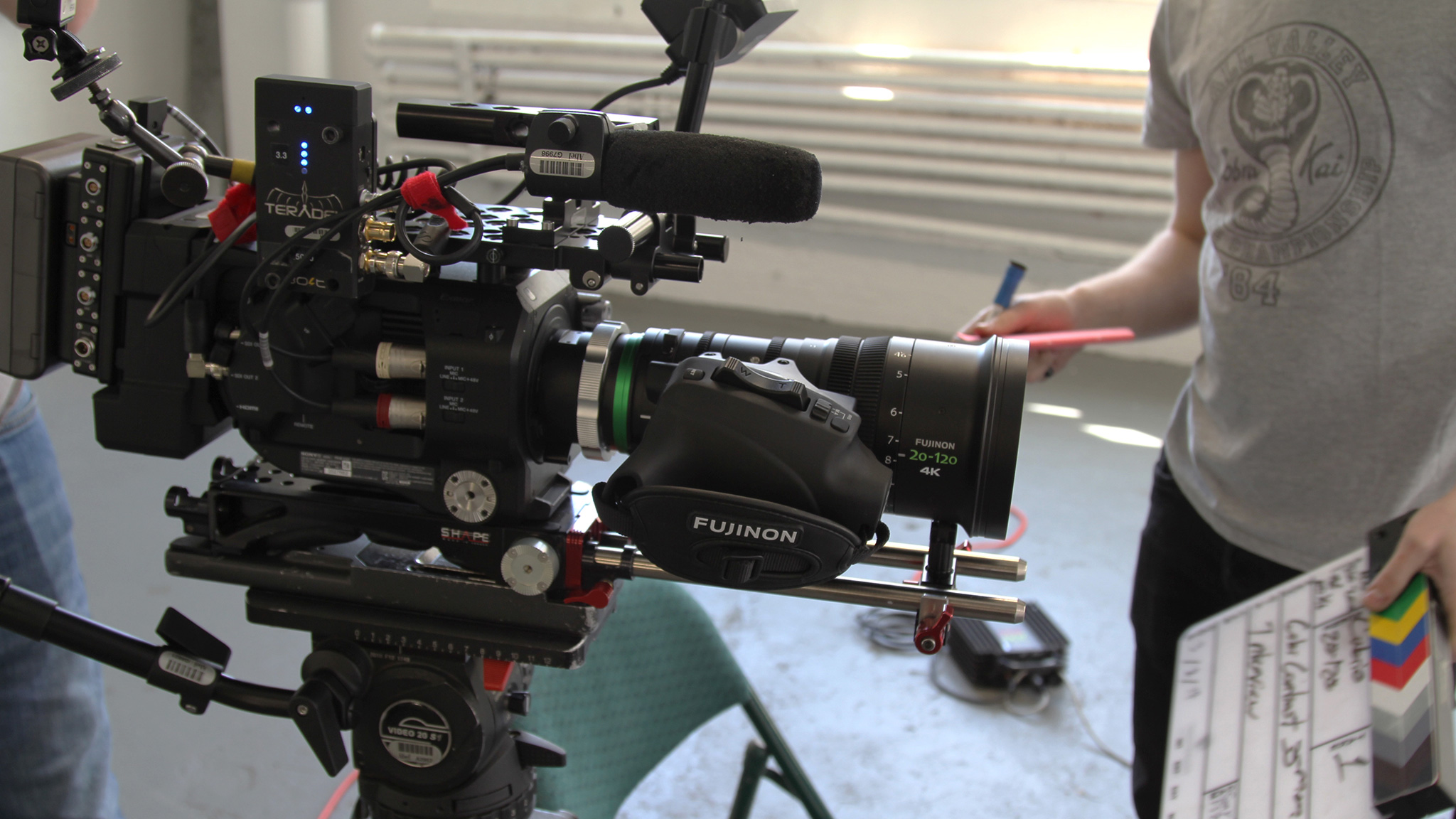
The Cabrio 20-120 is a PL-mount, consistent T3.5 aperture, all-metal-constructed cinema lens. It’s a heavy lens, weighing in at 6.4 pounds with the servo unit attached, and 5.3 pounds when the servo is removed. It’s the heaviest lens we tested (tied with the Canon 17-120), but is incredibly well-built and ergonomically great. The size of the lens is nice and compact. The lens rings are incredibly smooth and well dampened, making operation a pleasure.
The focal range is great, allowing relatively wide-angle shots as well as long telephoto coverage. This makes it a great choice when you want to keep one lens on the camera 99% of the time.
The lens includes a servo controller, that gives the operator a lot of flexibility when shooting handheld. You have start-stop capability, a zoom rocker allowing for smooth moves in-shot, auto iris, and remote ports on the underside of the servo for connecting external focus and zoom controllers. There is also a switch that allows you to disengage the motors to operate the lens manually, or you can fully remove the servo unit and use the lens on its own. Each of the focus, zoom, and iris rings are integrated with standard 0.8 gear pitches for integrating with a follow focus or industry-standard remote FIZ motors.
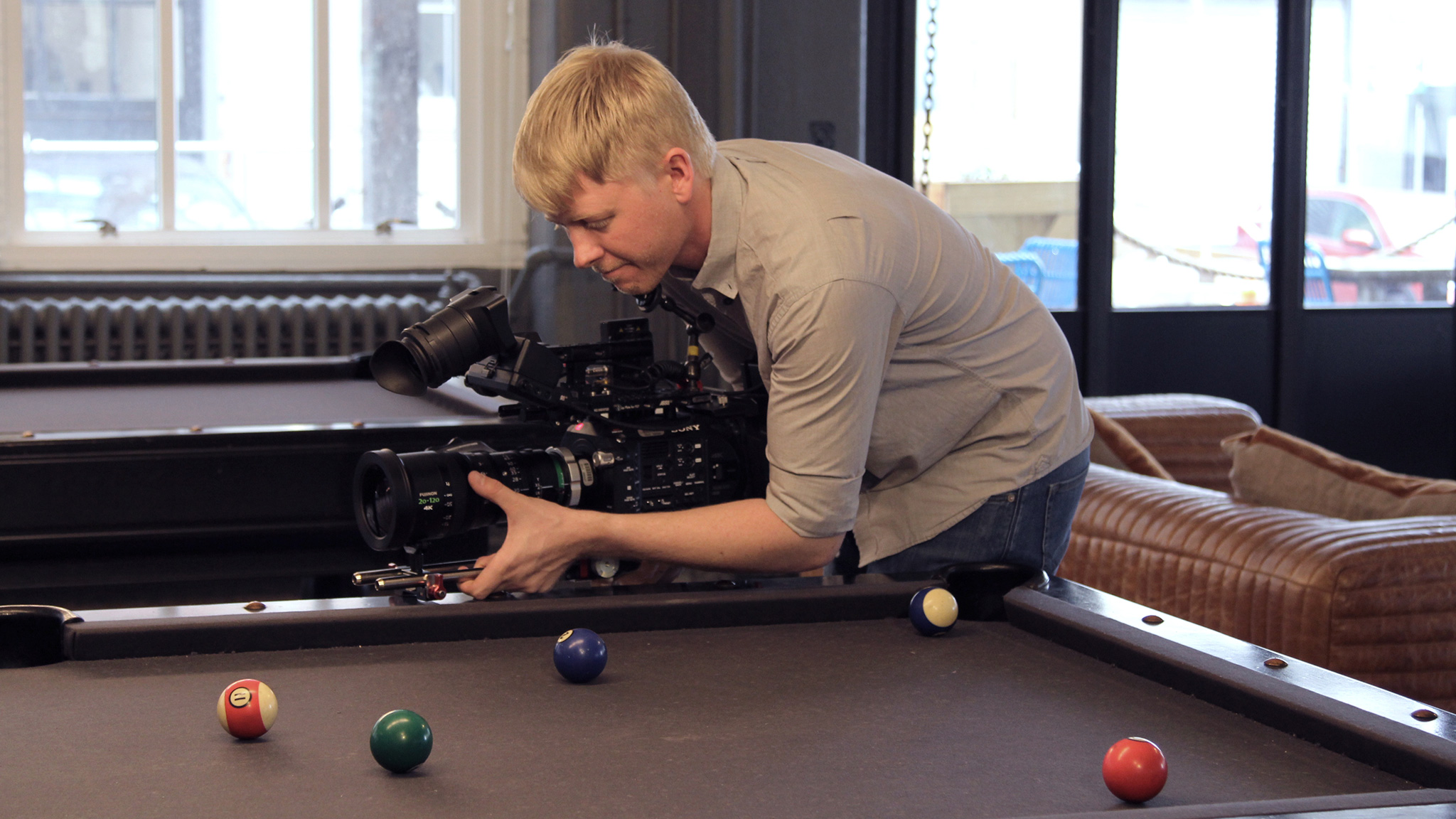
The Cabrio features a multitude of well thought out, high-end attributes that make for easier shooting. It has a flange focal distance adjustment, so you can manually adjust the back-focus of the lens in the field. This can be useful if working in extreme temperature environments when the back focus can fluctuate, or do a lot of travelling where the lens may come out of alignment. The lens is compatible with LDS (Lens Data System) and /i metadata for transferring and recording lens data to the camera — helpful if you need to know precise information from a shot that needs repeating, or when sharing with post-production for CGI. Also, the barrel markings of the lens are luminous, so you can read your focus, zoom and iris marks in the dark!
The Cabrio 20-120 is an economical option in the Cabrio line, matching well to the other lenses in the set, like the 19-90. It makes a great B camera lens when paired with the 19-90, or a perfect stand alone lens when cost is a factor.
GEOMETRY
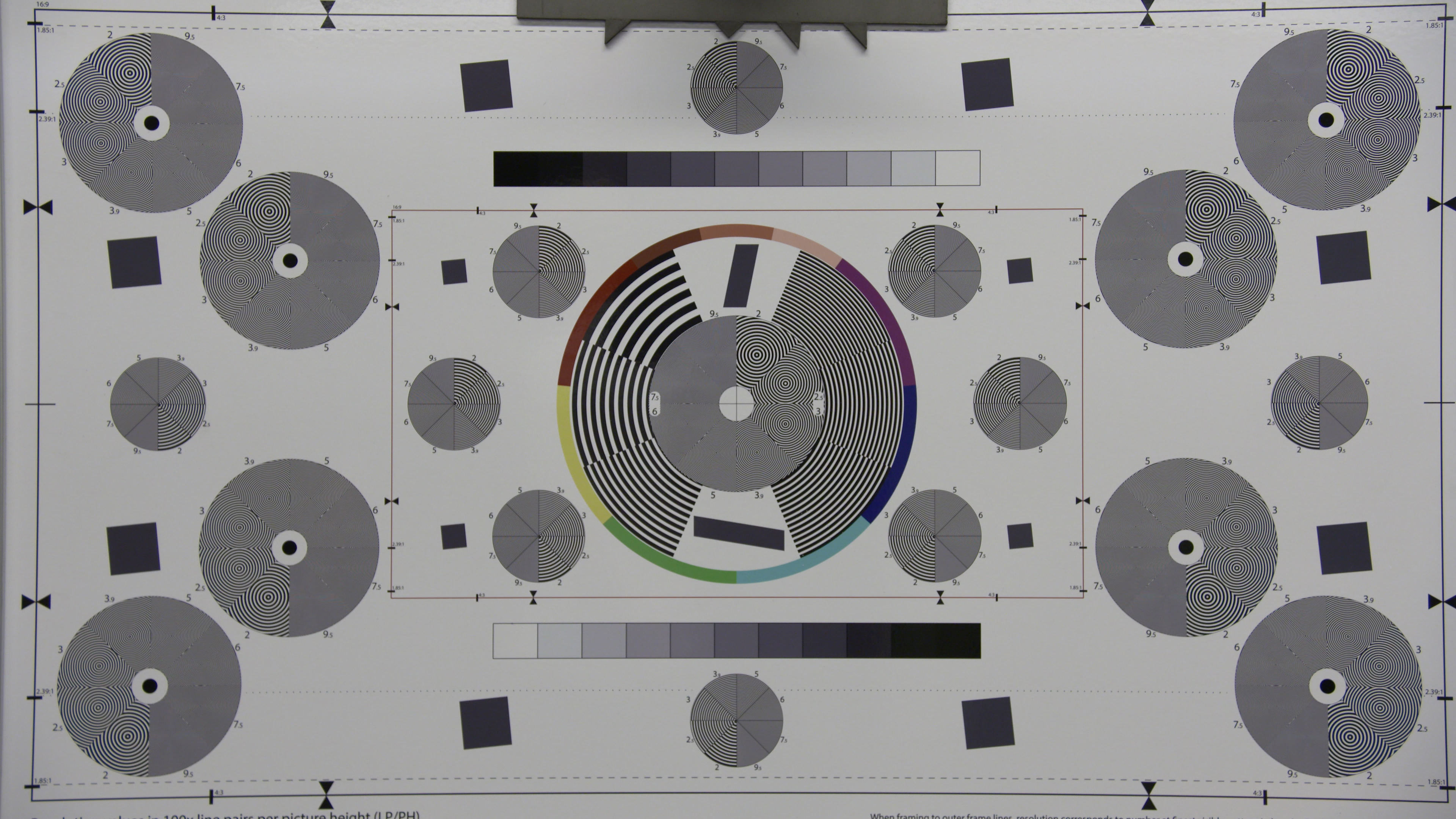
We tested the geometry of the lens by shooting the resolution chart and examining the outer box that lines the chart. You can see with the 20-120, the lens has some noticeable pincushioning. While it’s apparent when looking at the resolution chart, you can see there is no noticeable distortion to the image when looking at it in-scene, like here at 20mm in the interview frame.
EDGE BRIGHTNESS
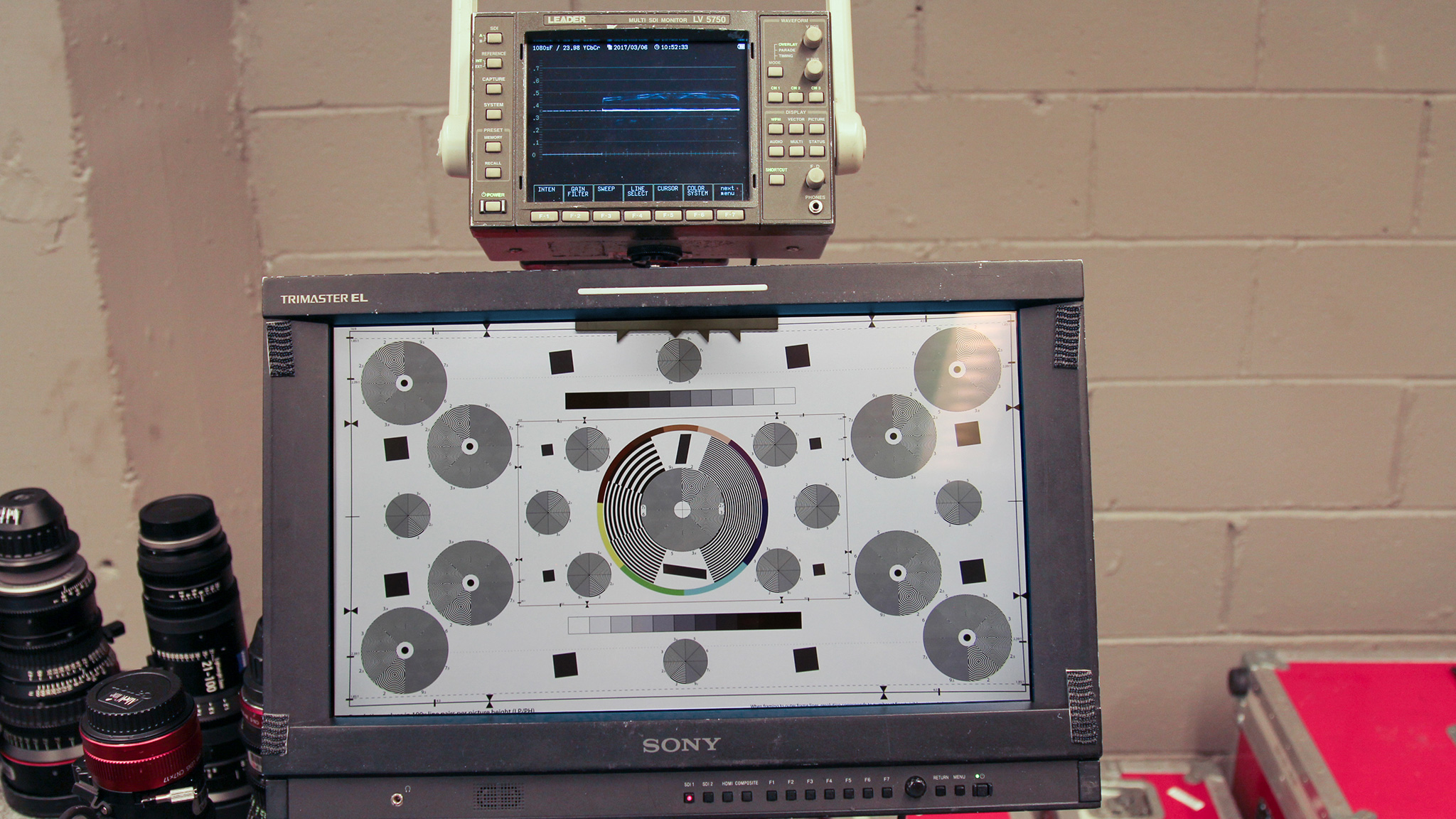
To test the edge brightness, we took the resolution chart shot at all T-stops from wide open to T11 and looked at it on a waveform monitor. Here, we can see subtle shifts in exposure across the image. Wide open at T3.5 and at T4, there is a slight falloff on the edge of frame when looking at the waveform. Once the lens is stopped to a T5.6 or higher, there is absolutely no falloff on the edges. Click here to download screen captures of all T-stops.
SHARPNESS
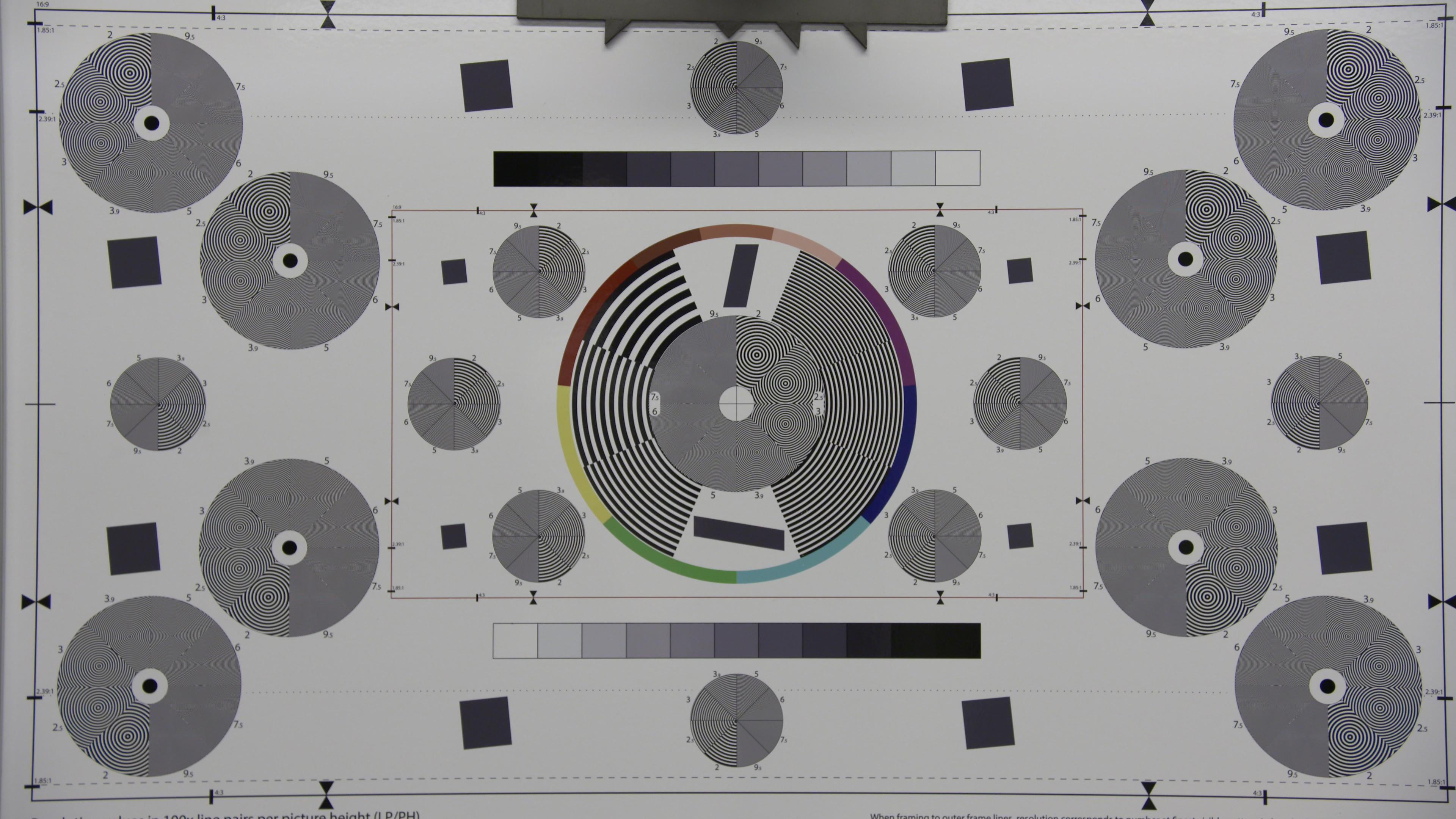
We shot the resolution chart again to test the sharpness of the lens, and found it is very sharp. The lens holds its sharpness throughout the entire aperture range, and there is no noticeable sharpness falloff on the edges. While the 20-120 isn’t as sharp as the 19-90, it holds it own very well and will intercut nicely. Download full resolution screen captures of all T-stops here.
CHROMATIC ABERRATION
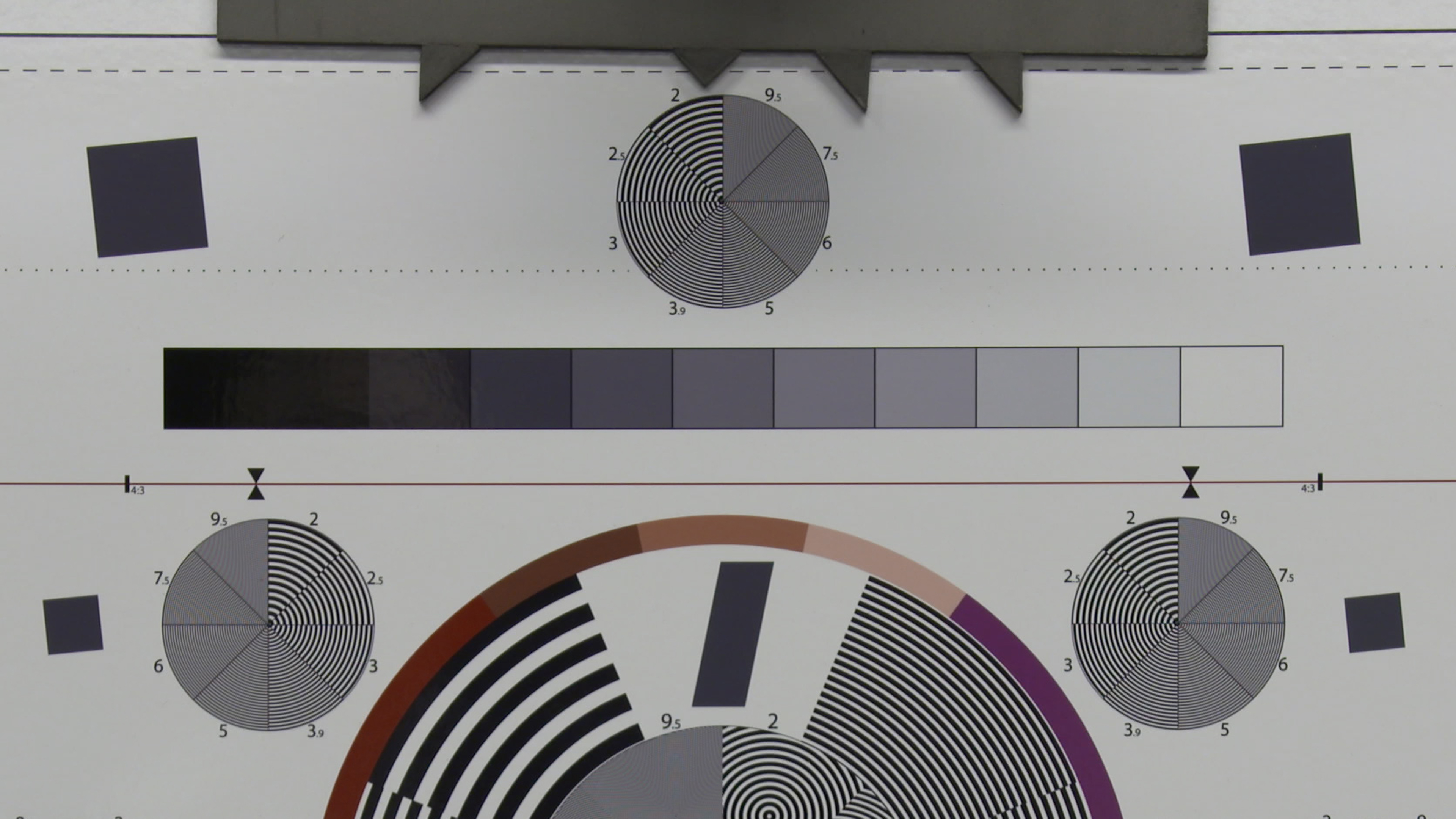
If we look at the off-kilter boxes on the resolution chart, we can look for chromatic aberration, or color fringing. With the lens, there is some red and blue fringing on both the vertical and horizontal sides of the boxes.
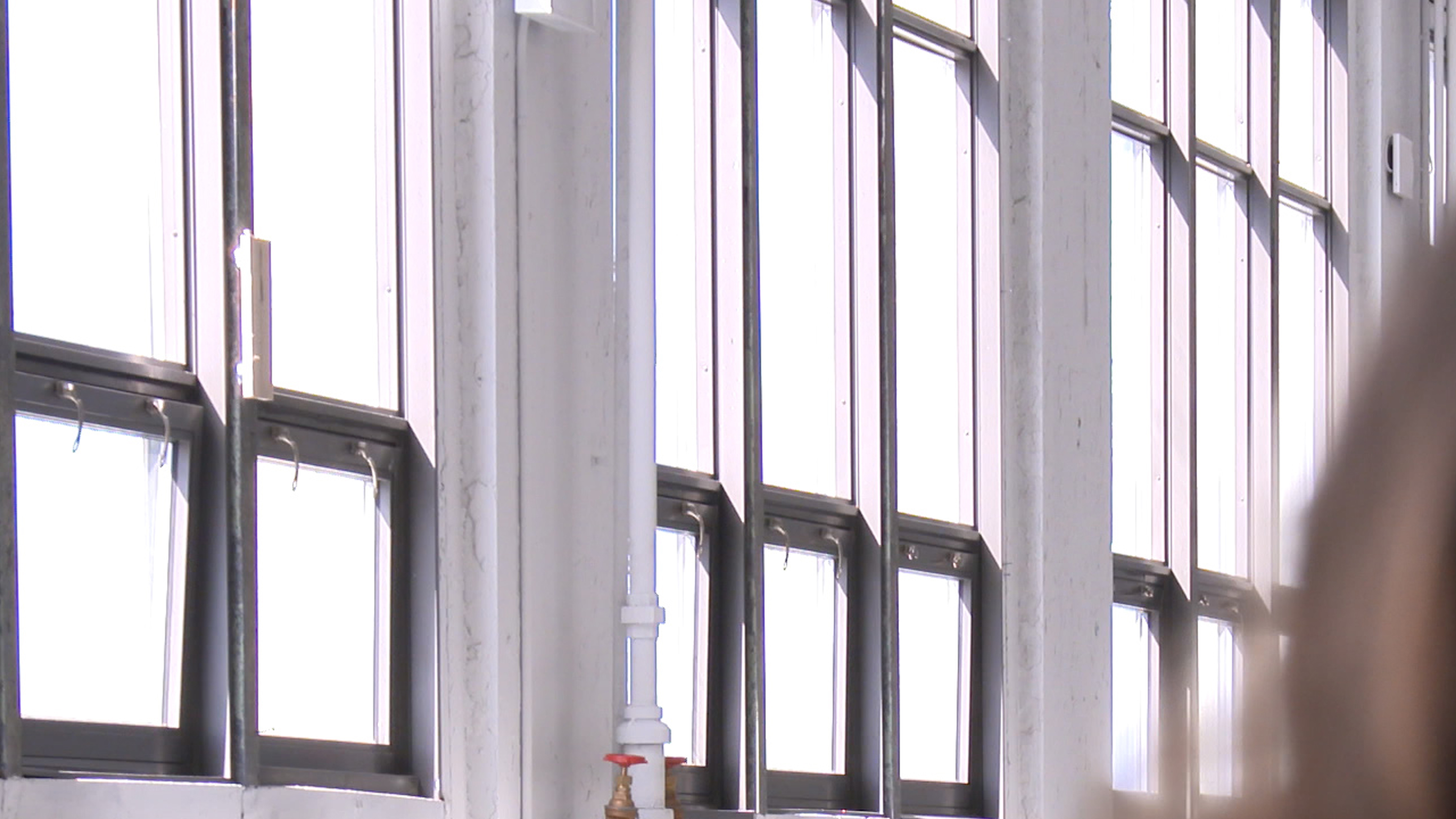
Interview frame at 300%
If we check this against the interview frame, enlarged 300% at the windows, you can see there is alternating blue and red fringing on the vertical sides of most of the window frames.
COLOR
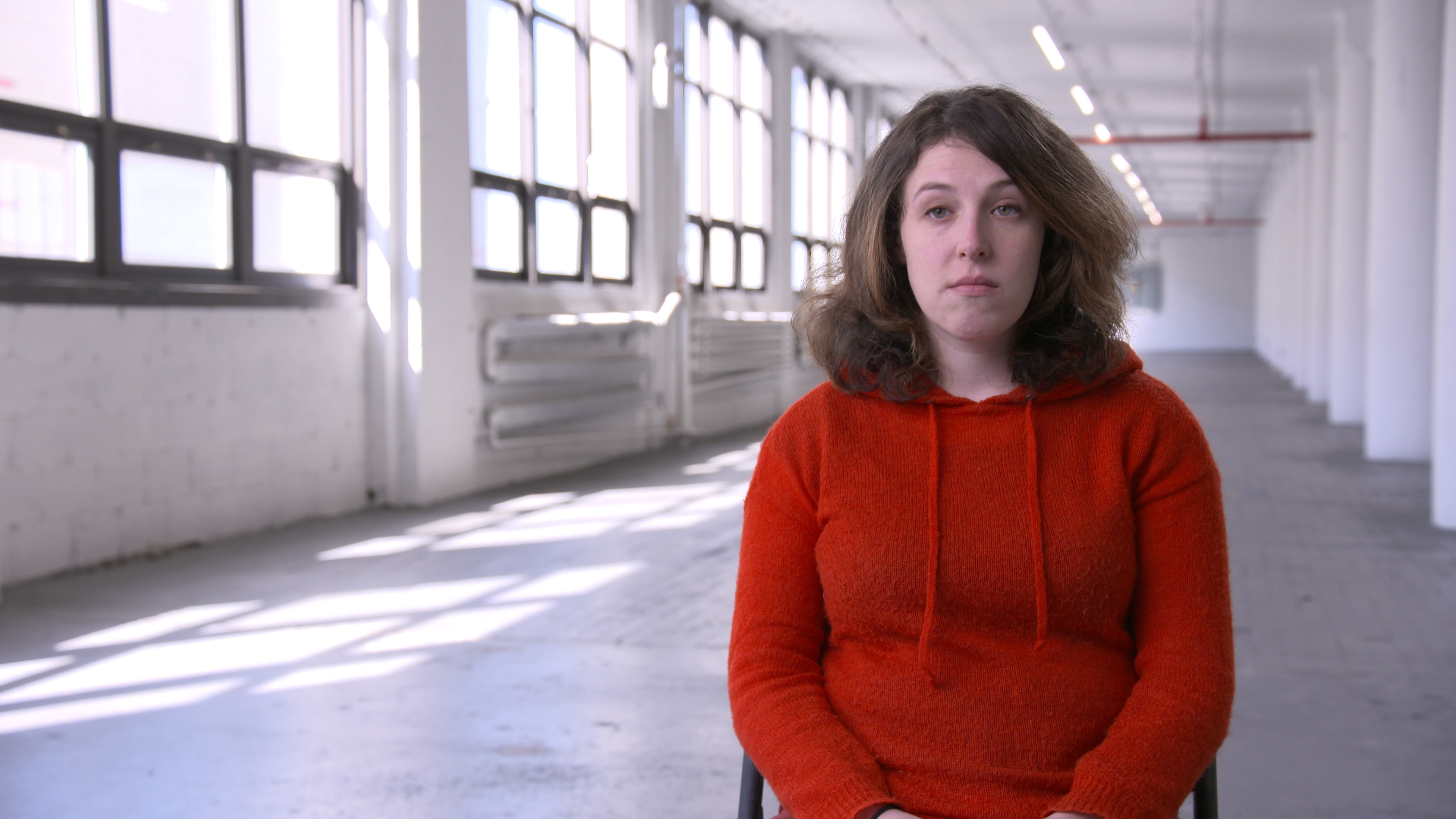
To test color, we first white balanced the camera sensor with no lens attached. This gave us a pure white from the ambient lighting in the room. We then attached the lens and shot a white card under the same lighting conditions. This gave us an accurate read on the lens color properties. When looking at the scopes, you can see on the vectorscope that the color leans towards yellow and green, and on the RGB Parade waveform, the green channel is almost as saturated as the red channel.
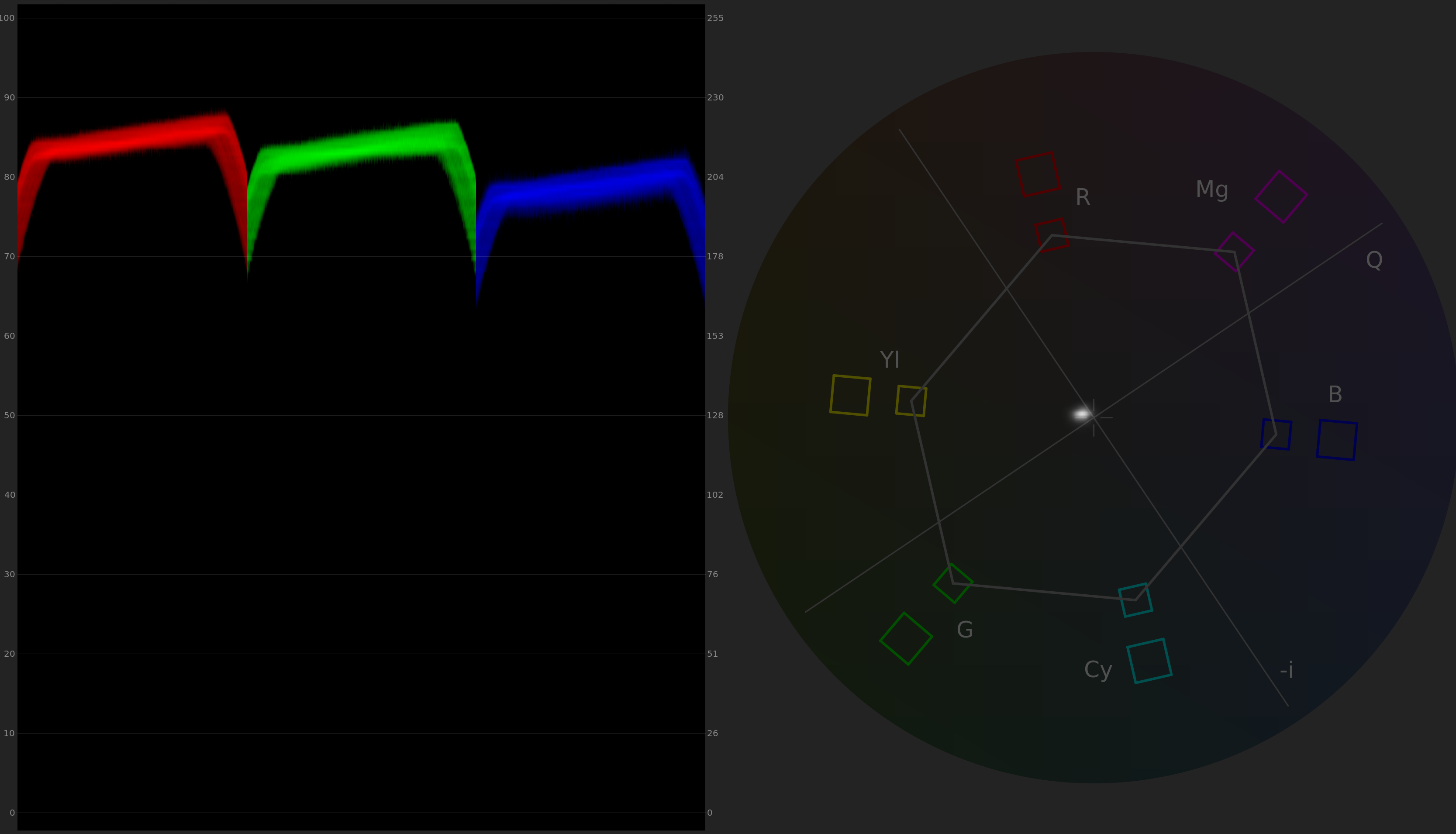
The subtlety of this shift isn’t seen much in the overall image, but it does neutralize the skin tones a little bit by bringing some of the magenta out. In the end, it gives a slightly cooler look to skin tones. The color of this lens is a neatly identical match to the 19-90.
BREATHING
We tested the lens for breathing in two setups. The first is in the interview frame at both 35mm and 50mm. By watching the columns on the right side of the frame, you can see that there is noticeable scaling in the image as we rack from background to foreground at both focal lengths. Surprisingly, the 20-120 breathes less than the more expensive 19-90.
The second test was at the pool table, at the wide and tight end of the lens. While the same scaling technically exists, I didn’t find it to be nearly as apparent.
MINIMUM FOCUS
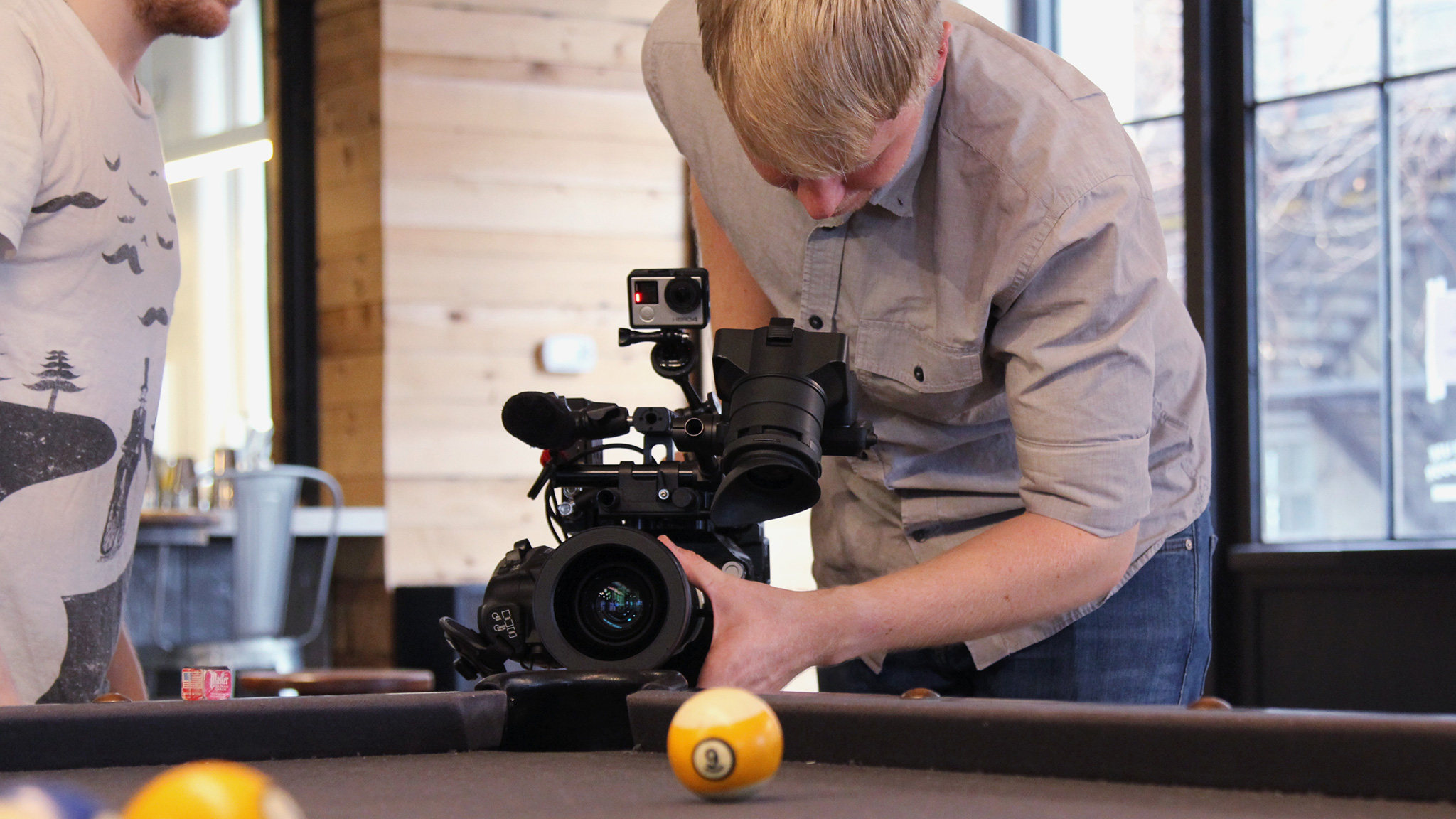
The minimum focus of the 20-120 is 3.8’, which is the deepest minimum focus of any lens in the test by far. The lens does has a macro setting that can be engaged physically on the lens. Sandwiched between the iris and the back focus adjustment is a knob that engages the macro focus. Be aware that your back focus will be thrown off, since this is using a diopter to pull the focus closer, so you can’t do extreme racks when in macro mode. This means you can’t just throw the lens into macro and leave it on to reduce the minimum focus from the standard 3.8’.
BOKEH
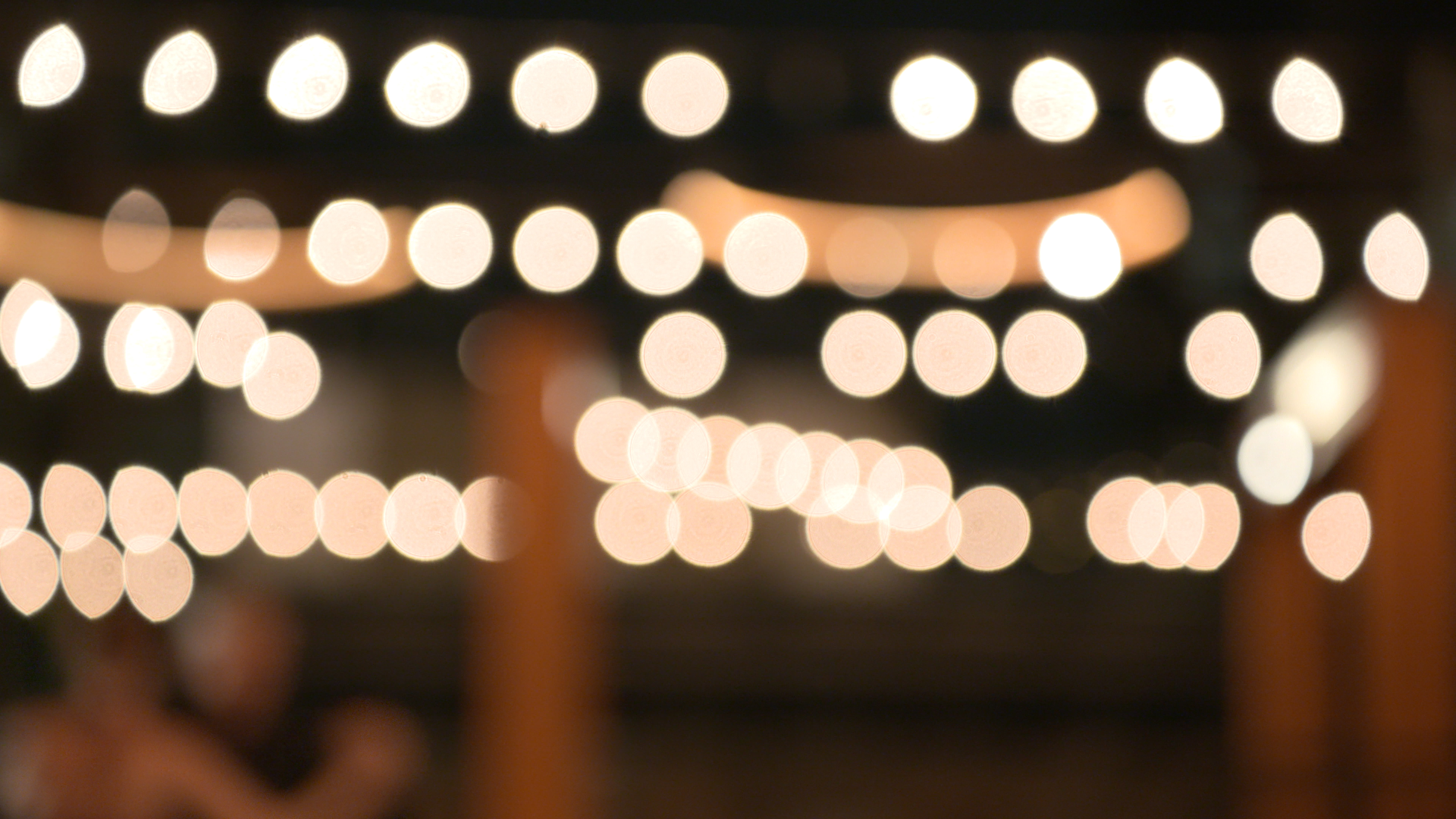
The 20-120 renders beautiful out of focus objects. If we take the outdoor cafe bulbs as an example, you can see that the bulbs are round and smooth, with a slight horizontal squish. As you get closer to the edges of frame, the out of focus elements get one side cut off, creating a jagged outer edge.
LENS FLARES
The 20-120 is an incredibly flare resistant lens overall. At the wide end of the lens, there is a small, yet bright halo around the light, as well as an obvious star pattern. The flare trail is incredibly minimal. At the very end of the trail are two conical elements blue in color, with tiny, pinpoint-sized elements along the trail itself. You can see the lens coating is doing an incredible job minimizing the flare, but as a result gives little life to the flare that exists.
At the tight end of the lens, the flare wakes up a bit. The coating again has minimized the flare tremendously, keeping the flare tight on the entrance and exit from frame. There is much more color, mostly in the form of “light leaks” at the beginning and end of the flare, with a soft, milky blue/purple look overall.
You can also see how the flares look in scene here: Lens Flare (tight), Lens Flare (wide)
CONCLUSION
The Fujinon Cabrio 20-120 is a well-performing cinema lens that functions very well as an all-around documentary zoom. The lens is solidly built, with well-designed lens rings that are smooth to operate. The addition of the servo unit turns this cinema lens into the perfect ENG lens. The lens isn’t incredibly fast at a T3.5, but it is consistent throughout the zoom range, which is incredibly helpful in a documentary environment.
The lens has minimal edge brightness falloff and is very sharp. There is some chromatic aberration in vertical sections of the high contrast parts of frame, and the lens breathes a little bit at all focal lengths. The minimum focus leaves something to be desired at 3.8’, but there is a macro setting when you need to get that specific shot.
The color is neutral, with a slight green tint. This yields a cooler look to the skin tones alone, without impacting the look of the rest of the image much. The bokeh is soft and round, with a slight horizontal stretch. The flares are incredibly minimal, retaining a sharp, crisp image, even when shooting directly into a bright light.
When comparing this lens to the 19-90, I found that Fujinon has done a much better job matching the critical elements of the lens (build, color, contrast, edge falloff, and bokeh) than other lens manufacturers, despite having a wide range of price, focal range, and weight. You can truly feel comfortable working with all of these lenses in conjunction with each other, as well as on their own.
I hope you found this lens test useful, and be sure to check out the other lenses in the Behind the Lens – A Look at Documentary Zooms series.















